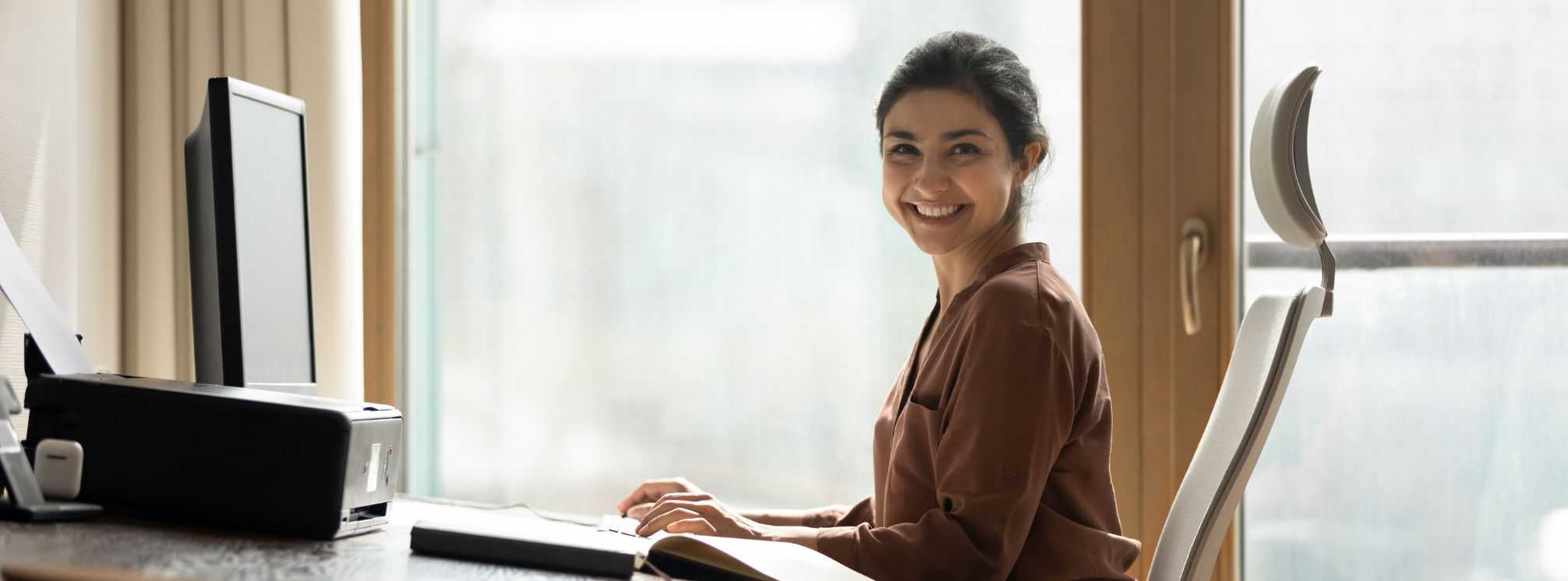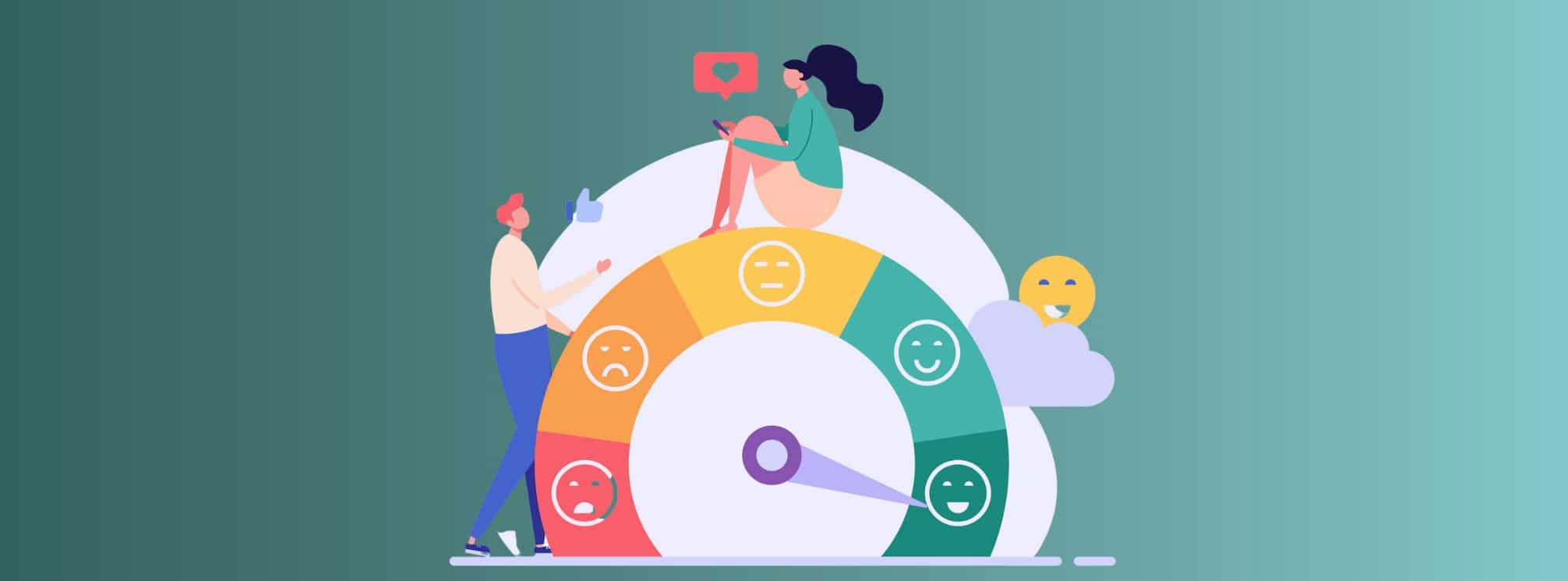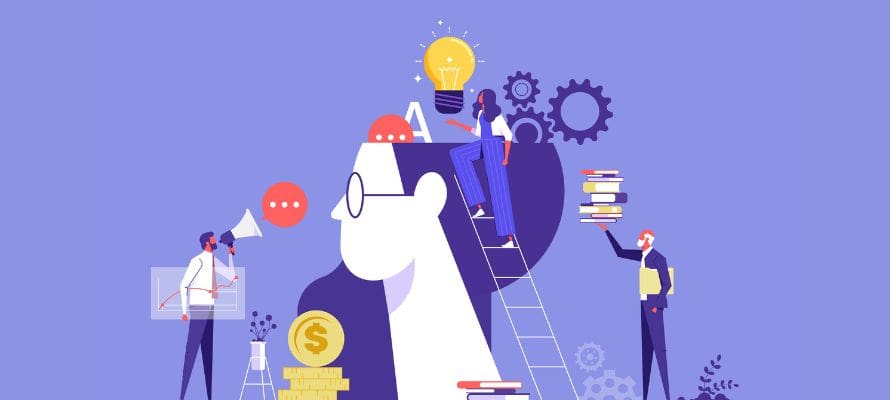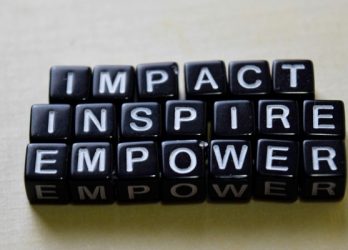Last updated on March 7, 2024 at 10:36 am
Creating a great employee experience is an art—often called employee experience design. Creating a great work environment requires thoughtful research and a community coming together to maintain over time. Keep reading for my best tips and advice for getting EX right.
What is Employee Experience Design?
To understand employee experience design, you have to start by understanding what “employee experience” is.
Employee experience is the overall experience an employee has at a company, spanning from the hiring process all the way to the exit interview. Often, EX is impacted by someone’s interactions with your brand even before they were hired.
So, employee experience design is the process of creating a strategy for crafting positive interactions and meaningful experiences for employees throughout their journey with your organization. EX design keeps in mind that every employee’s experience can be impacted by their role, seniority level, and working location. The best design systems take the cultural and technological factors into account and adapt EX for each audience segment.
Therefore, the goal is to align employee needs, expectations, and values with the company’s culture and objectives, resulting in improved engagement, satisfaction, and overall performance.

What’s the EX Design Process?
Employee experience design is a continuous process. It’s not a strategy you pen once, roll out, and then move on from. You have to work on creating your desired workplace environment and experience every day.
So, how do you design an experience? Follow these steps:
- Start with research. Conduct interviews/surveys and shadow different business units to get a better sense of your employees’ needs.
- Create personas. Use your research to create employee personas to visualize what each audience segment needs and wants. Your personas should capture demographics, roles, motivations, and preferences.
- Map the employee journey. Your EX design will have to address all touchpoints in an employee’s experience. So, plot the entire employee journey from pre-hire to post-exit, mapping key digital and physical touchpoints and interactions along the way. PRO TIP: Use your personas to map custom journeys for each employee group.
- Identify the pain points. It’s overwhelming to take on everything at once. Finding the biggest areas of improvement is a great place to start and will maximize your ROI.
- Create a cross-functional team. We’ll touch on this more shortly, but EX work is a multi-department effort. You’ll want to bring all stakeholders together to align on your program’s goals and vision for the workplace.
- Pen a strategy. Like your company branding and values/mission, you’ll want to formally document what your vision is for the employee experience. And then be honest about where you are currently, so you can document an actionable strategy to reach your goal.
- Implement and monitor. Put your plan into action and then watch it like a hawk!
- Keep improving. No one is going to get their employee experience design plan right at first. You’ll have to keep iterating on your strategy and pivoting based on employee feedback.

Why Focus on Employee Experience Design
Understanding why employee experience is important is a simple equation that anyone can relate to.
If your work environment is hostile or unsupportive or unfair, would you choose to keep working there? Odds are, probably not.
A great employee experience is when you have the tools you need. You feel valued and trusted. Communication is clear and transparent. Everyone believes in the mission. You feel a sense of belonging and acceptance.
When all those things line up, innovation and productivity can thrive. Retention goes up, and so does employee wellbeing.
How to Create a Great Employee Experience
Just knowing that you want a great experience is one thing. Envisioning what it should be at your specific company for all of your employee segments is another matter.
But actually creating a great work environment starts with a clear vision.
Often a great employee experience includes:
- Adequate employee benefits and support to foster holistic wellbeing.
- Feedback loops so the employee voice can be heard and acted on.
- Fostering diversity, inclusion, and belonging at all levels of the organization.
- Strong communication from all levels of leadership.
- Growth cultures that provide opportunities to grow and learn.
- A foundation of trust, transparency, and mutual respect for everyone.
We could list a lot of other things that make working somewhere positive. And while you can’t always control everything—like everyone’s actions—you can ensure that all systems, processes, and tools are in place to optimize the employee experience as much as possible.
Empathy as a Key EX Tool
One of the biggest challenges with EX design is knowing what people really want.
Take our example of providing adequate benefits to employees. How do you know what employees will feel is adequate? You might put together what you think is a great benefits package, but maybe it misses the mark for certain groups.
The same goes for communication. You might train your executive team on communication skills and create a great executive communication plan. But without collecting feedback from employees and targeting their messages properly, you still might fall short.
The best way to solve for this is to regularly conduct empathy work, culminating in empathy maps.
An empathy map is a tool used to gain a deeper understanding of a specific group by visually showing the thoughts, feelings, needs, and behaviors of individuals within that group.
You can use empathy maps any time you have a major change or initiative and need to understand how each employee group will be impacted. So, you can also use this tool to more intimately understand what each segment wants out of their workplace experience.
For instance, your frontline workers are going to want different things than your remote teams. And both groups are going to need something different than office staff. Using this tool can help you truly understand these nuances without making assumptions.
Creating Your Employee Experience Task Force
Designing and creating your employee experience truly takes a village. It’s a company-wide effort and every single member of your organization needs to play their part. That includes:
- The executive leadership team. They’re going to set the tone for the whole company. If they don’t lead by example and support EX efforts, it will be difficult to improve the work experience.
- HR. Because EX is all about the people, it’s only natural that human resources would have a big part to play. Specifically, HR is going to play a huge part in implementing policies and processes for EX.
- Internal communications. Communication ensures that employees are informed, engaged, and connected. The comms team contributes to creating transparent and clear communication channels that enhance the overall experience.
- People managers. Managers have the biggest influence on their team members’ experience. Their leadership styles, communication skills, and ability to provide growth opportunities are critical to employee satisfaction.
- IT. The digital employee experience is a huge part of EX. IT teams ensure that tools and platforms are user-friendly, efficient, and enable seamless communication and collaboration.
- Facilities. Physical workspaces and facilities impact employee comfort and wellbeing. Collaborating with facilities teams can create environments that support productivity and employee health.
- Employees. Every member of the company has to also play their part as a good teammate. But we also have to show up and be willing to provide feedback to our employers if we ever want things to improve.
I recommend putting together a cross-functional task force to regularly meet and discuss your employee experience design and progress.

Finding Employee Experience Tools
Once you have planned your employee experience design, you’ll need the right tools to support your vision. To find the right tools and channels:
- Define your goals and where the gaps are in your current tech stack, using an audit.
- Get employee input on the tools and technology that would help them in their day-to-day.
- Thoroughly research the employee experience tools on the market, including their ability to integrate together and with your other technology. Remember that you need to consider DEX too!
- Consider the scalability of each tool and if it will serve your long-term goals and vision.
Remember that employee experience tools are enablers, not solutions in themselves. The success of these tools relies on how effectively they are integrated into your overall employee experience strategy.
By carefully considering these factors and involving key stakeholders in the decision-making process, you can find tools that amplify your efforts to create a more engaging, fulfilling, and productive work environment.
About the Author
Sydney Lauro is the Demand Generation Manager for theEMPLOYEEapp. Prior to joining the team at theEMPLOYEEapp, Sydney worked in internal communications for Chipotle Mexican Grill. She uses her internal comms expertise and passion for improving communication and the employee experience to create content and share best practices to help other communications professionals.
Subscribe To The theEMPLOYEEapp Newsletter
Comments are closed.




